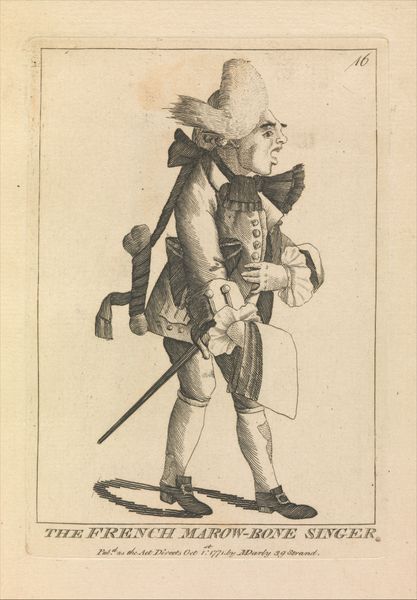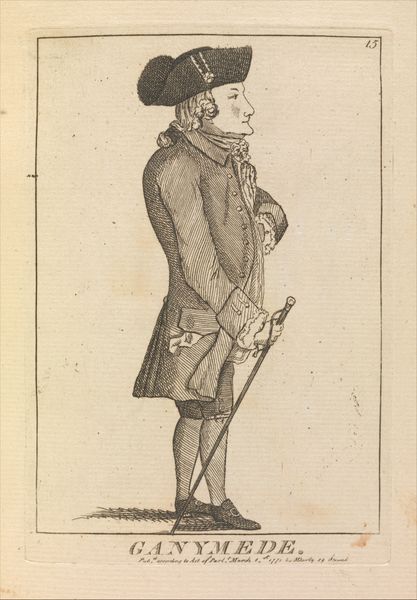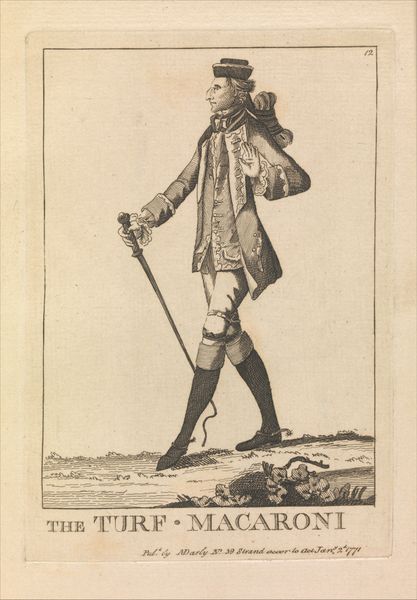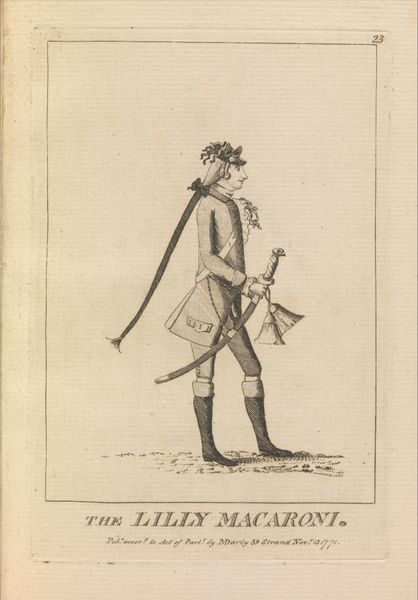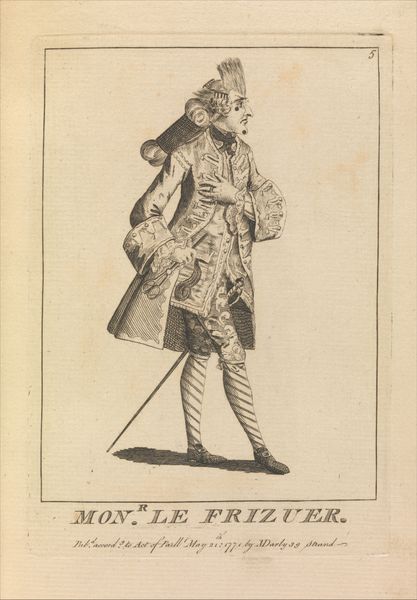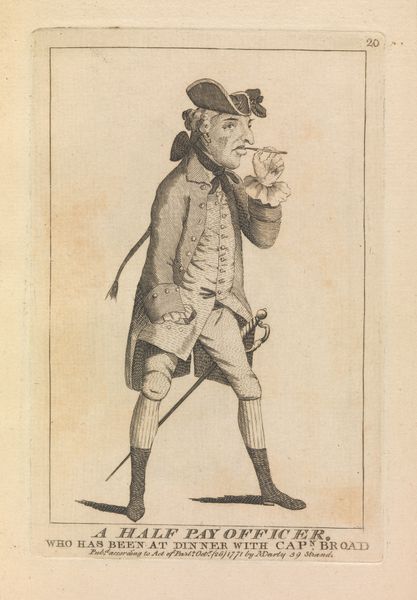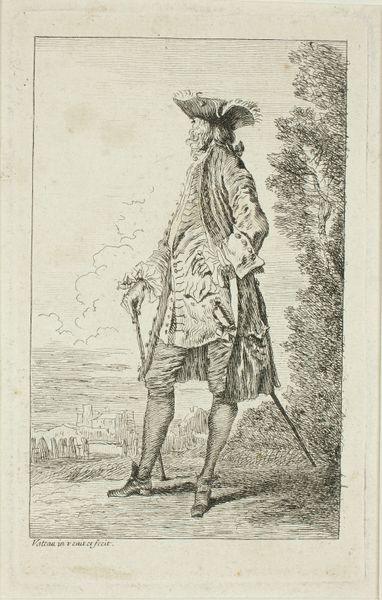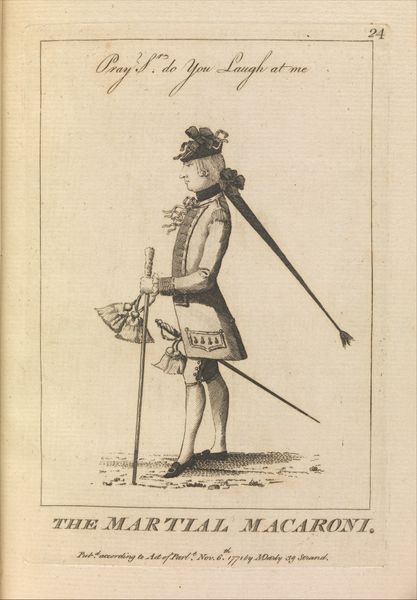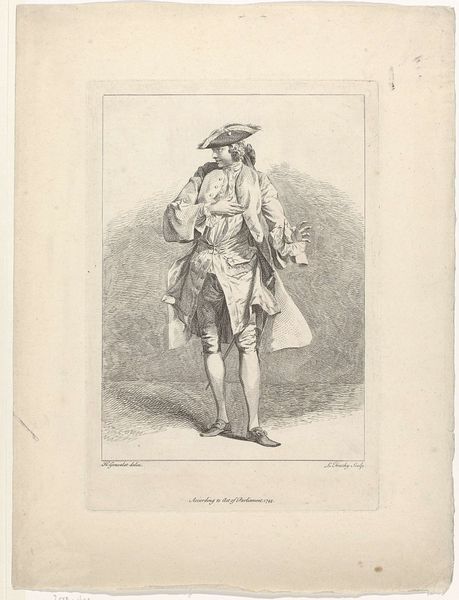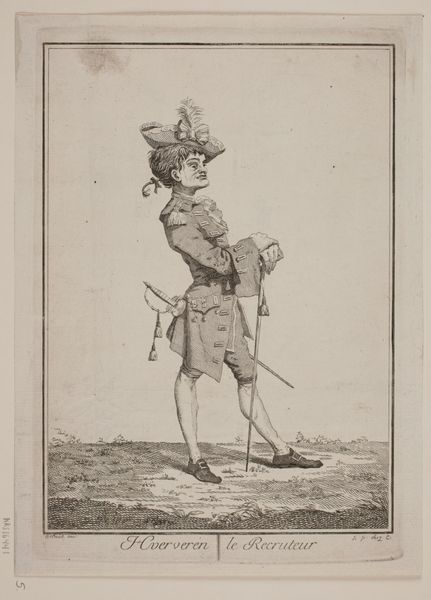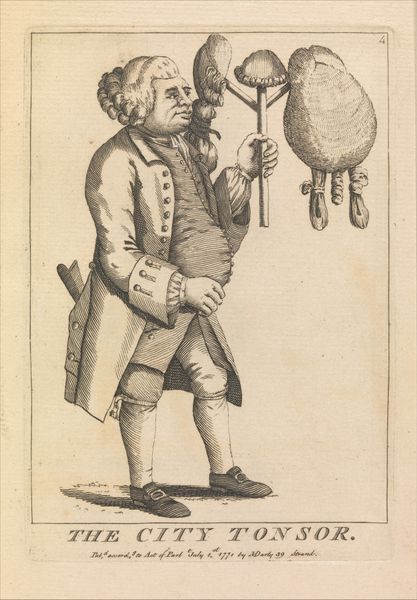
drawing, print, etching
#
drawing
# print
#
etching
#
caricature
#
genre-painting
Dimensions: plate: 5 15/16 x 4 1/8 in. (15.1 x 10.5 cm) sheet: 8 13/16 x 5 7/16 in. (22.4 x 13.8 cm)
Copyright: Public Domain
Henry William Bunbury created this etching, "The Dog Barber," in England in 1776. It offers a satirical commentary on social hierarchies and pretensions of the time. The print depicts a man, presumably the dog barber, with exaggerated features, finely dressed, carrying a stool and scissors. The sign above him reads in French "La Vengeance, Decrotteur Royal, Tond des Chiens Proprement" which roughly translates to "The Revenge, Royal Shoe Shiner, Dog Groomer Properly". By using French in the sign Bunbury is highlighting the cultural capital that this language had in 18th century Europe. Bunbury's caricature cleverly uses imagery to mock social climbing and the adoption of foreign customs. Was he commenting on the triviality of status symbols, or perhaps critiquing the Royal Family? To delve deeper, one could explore 18th-century British social history, consult period newspapers, and study Bunbury's other satirical works. This would shed light on the social commentary embedded in this seemingly simple image and the public role of art in this period.
Comments
No comments
Be the first to comment and join the conversation on the ultimate creative platform.
